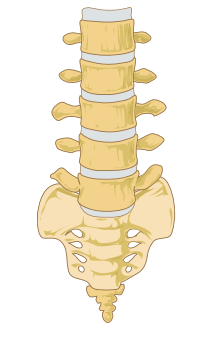
Selective dorsal rhizotomy (SDR) is a permanent, irreversible, but minimally invasive neurosurgical/spinal procedure where spasticity is reduced in patients with cerebral palsy.
What is it?
Spasticity is a disorder in conjunction with disorders affecting the brain or spinal cord, such as cerebral palsy. Spasticity consists of muscle tightness, stiffness, and spasms, which are very disruptive to a patient’s daily functioning and quality of life. For severe spasticity that is unresponsive to other treatment options, such as stretching or injections, SDR may be the best treatment. SDR corrects muscle spasticity by cutting the nerve rootlets in the spinal cord that are sending abnormal signals to muscles. SDR has demonstrated reduction of spasticity, as well as an increase in daily functioning, mobility, and independence.
What should I do to prepare?
The doctor will check the patient’s medical history and determine if this procedure is appropriate, based on the severity of existing medical conditions. A surgical team will then come up with a plan for surgery, and discuss rehabilitation options. The doctor may also require additional imaging to determine the best injection point. If a patient is currently taking blood thinners, he or she will be asked to stop taking them prior to the surgery. If performed on an outpatient basis, transportation arrangements should be made. Overall health is an important factor in recovery time, and so physicians recommend following a healthy lifestyle leading to the procedure.
What happens during the process?
The patient’s back will be marked with a marker indicating the incision site. The patient will then go under general anesthesia, either by gas mask or IV sedation. The physician will then insert a breathing tube and administer IV fluids throughout the procedure. An incision will be made in the back and the spinal canal will be opened, allowing the surgeon to access the sensory nerve roots. The roots are separated into smaller rootlets, and the surgeon tests each rootlet with an electric impulse. The rootlets that send abnormal signals to the muscles are removed, permanently reducing spasticity. Up to 100 rootlets may be tested, and the entire procedure will last 3-4 hours in duration. At the conclusion, the spinal canal and the incision will be closed.
What are the risks and potential complications?
As with any surgical procedure, a selective dorsal rhizotomy can carry risks. These risks include:
- Reactions to anesthetic
- Bleeding
- Pain
- Spinal deformity
- Bronchospasm
- Aspiration pneumonia
- Urinary retention
- Sensory loss
Disclaimer:
All GlobeHealer Site content, including graphics, images, logos, and text, among other materials on the site are only for education purposes. This content is not intended to be a substitute for professional medical advice, and you should always contact your physician or qualified health provider for information regarding your health. Information on this site regarding the overview, diagnosis, and treatment of any kind should be looked at, in addition to the advice and information of your health care professional. Do not disregard medical advice or delay seeking treatment or medical advice due to information found on the GlobeHealer site.
If there is even the possibility that you may have a medical emergency, seek treatment, call your doctor, or call your local emergency telephone number immediately. GlobeHealer does not endorse being the first line of communication in case of emergency and does not endorse any specific test, physician, facility, product, procedure, opinion, or other information that is or may be mentioned on this site or affiliated entities. Reliance of any and all information provided by GlobeHealer, its employees, affiliations, others appearing on the Site under the invitation of GlobeHealer, or visitors of the site is solely at your own risk and is not the responsibility of GlobeHealer.
Image Source: https://upload.wikimedia.org/wikipedia/commons/7/79/Lower_spine.gif
